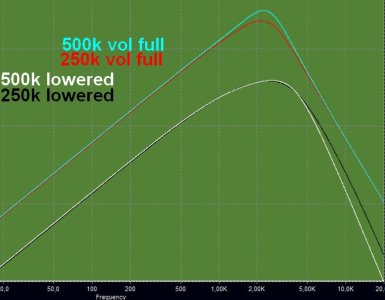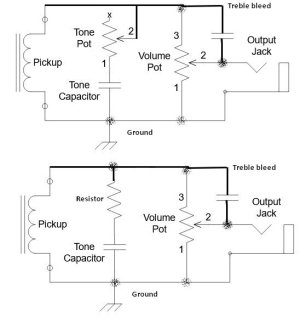That's because the tone pot is providing an additional load to the pickup. Disconnecting it is the functionally the same as increasing the ohm value of the volume control.
I just caught this. What is the exact effect of the tone pot increasing the ohm value of the volume?
For instance, when I swapped the original 500K vol for a 250K vol. It sounded close to what I'm used to, but imo was a bit darker. I wouildn't be surprised to find out that a 250K volume is the exact same as a 500+500 volume/tone, and that the difference I heard came down to tolerance of parts.
If anyone knows, would a 250K vol be expected to be darker than a 500+500? And what is the theoretical identical volume pot to 500+500t?
In the past I have just swapped parts on recommendation, now I'm trying to learn what is actually happening.


